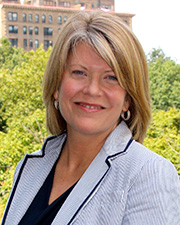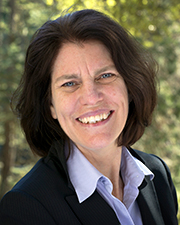Questioning the Calculations |
College Promise Programs | Donate! 


What's AHEAD: MOOCs Commentary
To join the discussion on these commentaries, please visit our Facebook page: http://www.facebook.com/PennAHEAD
MOOCs: What Are Higher Education Leaders Thinking?

 Laura Perna & Alan Ruby
Laura Perna & Alan Ruby
Alliance for Higher Education and Democracy (AHEAD)
Over the past year, the topic of MOOCs has been hotly debated, with some arguing that MOOCs are an innovative approach for addressing some of the most pressing issues facing higher education and others asserting that MOOCs are a passing fad and cannot live up to the hype.
Although MOOCs are a potentially important innovation, it is important to recognize the role that online education is already playing in higher education. In its 11th annual survey of US online education, Grade Change: Tracking Online Education in the U.S., the Sloan Consortium reports that, in 2013, 7.1 million students – one in three U.S. higher education students – took at least one online course. The survey also reveals that, although two-thirds of chief academic officers believe that online education is a critical long-term strategic issue for their institution, many higher education leaders have questions about the educational effectiveness of online education and are uncertain about the benefits of MOOCs to institutions or students.
The first (April 2014) What’s AHEAD survey of higher education trend spotters gives additional insights into higher education leaders’ views about the potential role and contributions of MOOCs. Our survey, like the Sloan Consortium survey, reveals that at least some higher education leaders are optimistic about the potential of MOOCs to produce a number of benefits. Some see MOOCs as increasing institutional visibility and prestige. Others see higher education students benefiting through improved pedagogy and society more generally gaining through increased access to higher education in the U.S. and globally.
The What’s AHEAD survey of higher education leaders (like the survey by the Consortium) provides useful insights into the development, adoption, and implementation of MOOCs. The results also raise questions about the design, purpose, and efficacy of MOOCs that must be addressed through systematic rigorous research. We (with other colleagues at Penn GSE, Robert Boruch, Nicole Wang, Janie Scull, Seher Ahmad, and Chad Evans) have begun to address some of the many questions about the reach and efficacy of MOOCs.
We hope that, moving forward, practitioners will work with researchers to build on these survey results to systematically study MOOCs and further enhance understanding of their potential roles and contributions. Greater collaboration between MOOC researchers and instructors as courses are being developed would facilitate identification of what “works” in a MOOC and promote opportunities to intentionally empirically test whether and how MOOCs may live up to their potential.
To this end, we invited three Penn alumni, all leading scholar-practitioners, to comment on the What’s AHEAD survey results and are posting their comments on this site to contribute to continued dialogue about and understanding of MOOCs.
MOOC Underpinnings Need to Change Before Their Value Is Enhanced
 Wallace E. Boston
Wallace E. Boston
President and CEO
American Public University System
As a veteran of over a dozen years involved with online higher education, I applauded Jack Wilson, President Emeritus of the University of Massachusetts system, when he led off the annual Sloan Consortium conference two years ago with the statement “based on the claims made by the companies hosting MOOCs, you would think they invented online education. Where were they the last 20 years?” With hundreds of thousands and ultimately millions of students registering for free online classes, the promoters from Coursera, Udacity, and EdX received the attention of many in the higher education and national press in 2012 and 2013.
Instructional practices for “traditional” online classes have evolved over time as technology and Internet bandwidth have improved. Nearly all practitioners and researchers have reported on the importance of prompt and meaningful interaction and engagement between the online faculty member and the online student. The importance of these classroom dynamics has caused many online course providers to cap enrollments at 25 students per class section or less. That’s a much lower number than the large lecture classes at residential colleges and universities that many of us not so fondly remember. Most of the MOOC companies have elected to format courses in a series of videotaped lectures with some offering peer-to-peer, live chat, or teaching assistant interaction versus professor-student interaction. The lecture format and automated grading have allowed average MOOC enrollments to be in the thousands, tens of thousands or even more than a hundred thousand. However, the overall MOOC completion rates are less than 10 percent.
As the providers of MOOCs seek ways to improve course completions and outcomes, they need to recognize that not all students can handle self-paced learning and that their course design must incorporate more student interaction. The utilization of “rock star” professors who provide great lectures but no interaction with students is likely to provide better outcomes in recruiting students to an institution than retaining them. Better designed courses, artificial intelligence and adaptive learning software may be helpful but twenty years of practice and research shouldn’t be ignored.
Massive Open Online Courses (MOOCs): Two Camps of Thought
 Peggy A. McCready
Peggy A. McCready
Director, Academic Technology Services, ITS
New York University
Since 2012 there have been many hypotheses and much hyperbole concerning MOOCs. Early MOOC providers included many of America’s most prestigious research universities, which ironically, had little to no experience in the market of online education. Those institutions that could afford to invest in MOOCs spent a significant amount of resources developing high quality content for their courses that would reach thousands of students, thus gaining worldwide recognition for the institution and faculty. These institutions were quick to engage in MOOCs, as they were keen on having the advantage of being the first to offer courses they believed would have the greatest demand and impact. This behavior exemplified the competitiveness among the top-tier research universities.
There are essentially two camps of thought on MOOCs. The first camp is that MOOCs will change the way higher education is provided, while addressing many of the long-standing issues, including access and affordability. This hypothesis would ultimately require more than just a few institutions to provide and/or accept credit for MOOCs, enabling more affordable solutions and greater alternatives to earning college credit. The second camp is that MOOCs represent an opportunity to experiment with new and innovative teaching and learning practices in an on-line environment. This hypothesis requires faculty and students willing to experiment with MOOCs, as well as sufficient resources to support institutional research.
Regardless of into which camp your institution may fall, it is unlikely that MOOCs will result in the same level of disruptive innovation that iTunes had on the music industry or fix many of the long-standing issues facing higher education. Where I would wager my resources is in conducting research related to effective teaching and learning practices for MOOCs, as the knowledge gained from this research will also benefit faculty teaching fully online, hybrid and face-to-face courses.
Learning from MOOCs
 Candace Thille
Candace Thille
Director, Open Learning Initiative
Assistant Professor of Education, Stanford University
Much of the early hype about MOOCs was the potential of “learning at scale.” Unfortunately, the focus has primarily been on “scale” rather than “learning” – with the consequence that MOOCs have been most successful with people who are already well educated. It is time to redesign MOOCs and the MOOC creation and use this ecosystem to address the dual challenge of cost and attainment confronting our nation’s higher education system.
If MOOCs, in their current form, are used simply to replace more traditional forms of instruction, their legacy will likely be widening rather than narrowing the attainment gap. We must redesign MOOCs so that they draw from, and add to, research in the science of learning and so that they foster a productive interaction between learning research and teaching practice. MOOCs currently collect massive amounts of student data but the data lack the information that is needed to provide insight into student learning. We must also change the MOOC ecosystem to bring together individuals and institutions whose work typically does not intersect, but whose collaboration is essential to design effective learning environments and data analysis systems. New partnerships must be forged among learning scientists, education researchers, computer scientists and faculty who teach in a variety of disciplines across multiple institutions.
We have learned a lot from MOOCs, among other things that there is not a quick fix for addressing the dual challenge of cost and attainment. Addressing the challenge will be a multi-institutional, multi-year research and development process. In leading this process, traditional higher education has the distinct advantage of having the faculty who possess the subject matter expertise, the expertise in engaging in research, and the passion not only for their own fields of study but also for their students’ learning.



